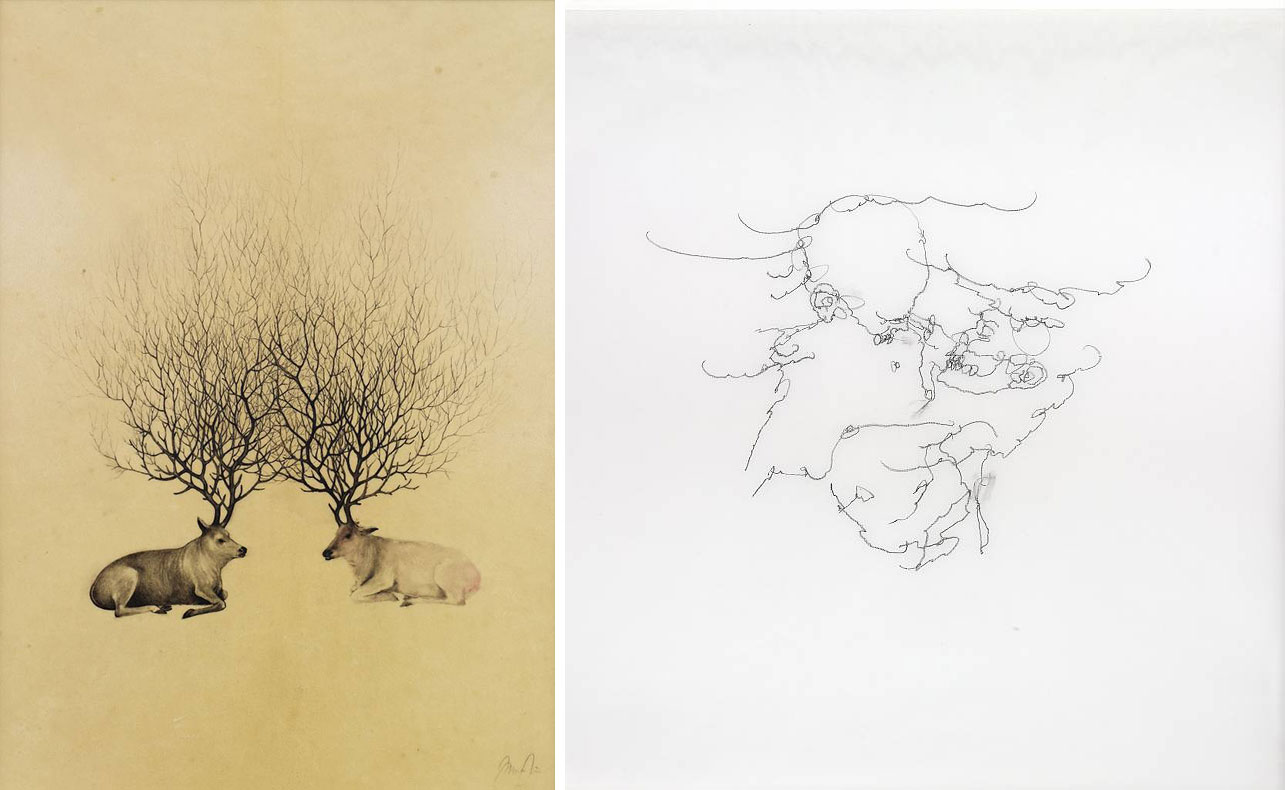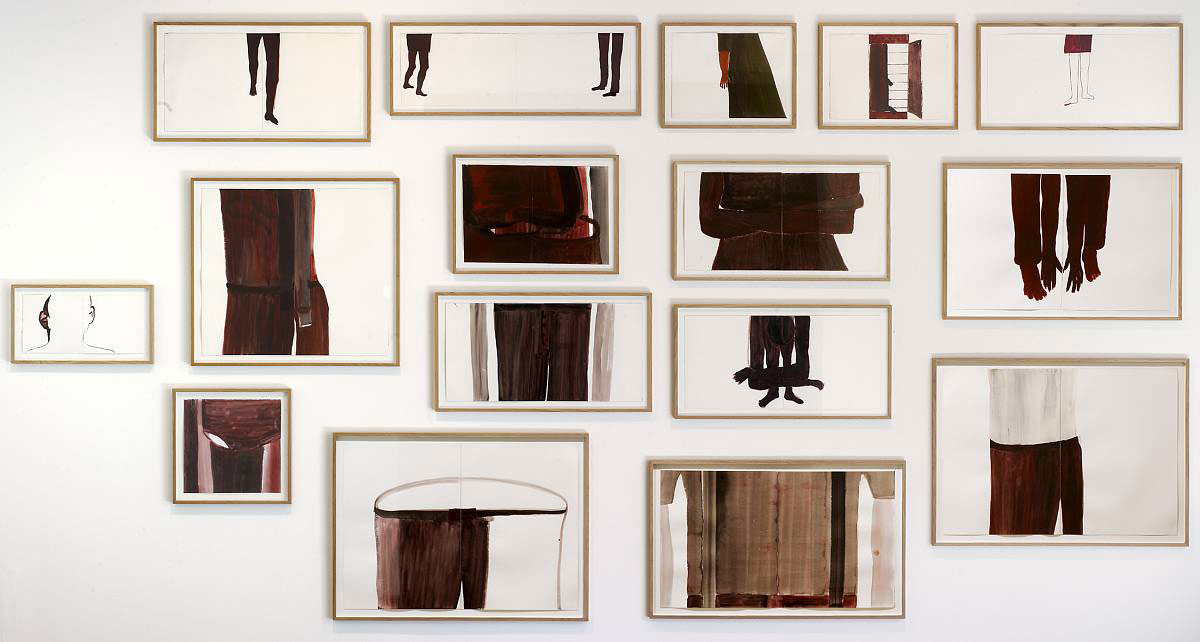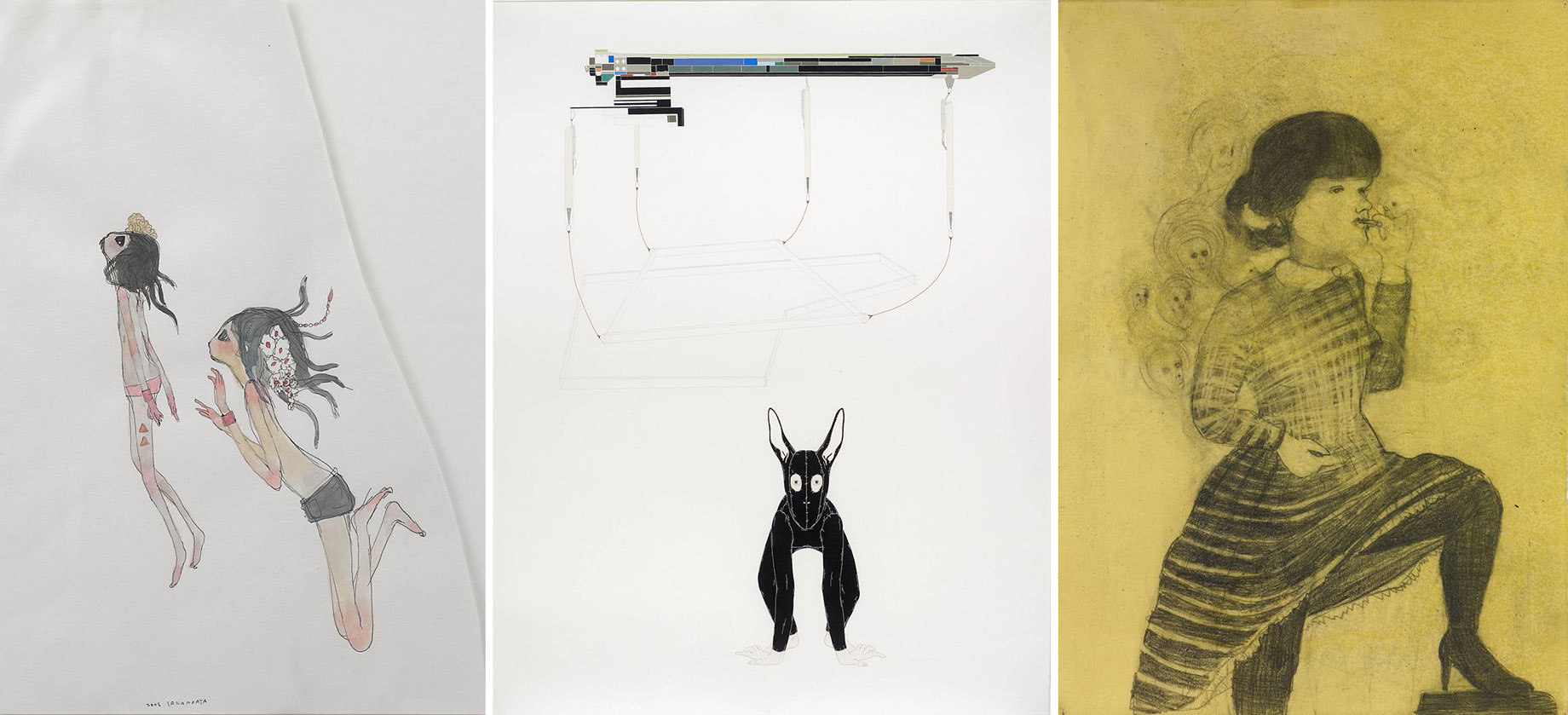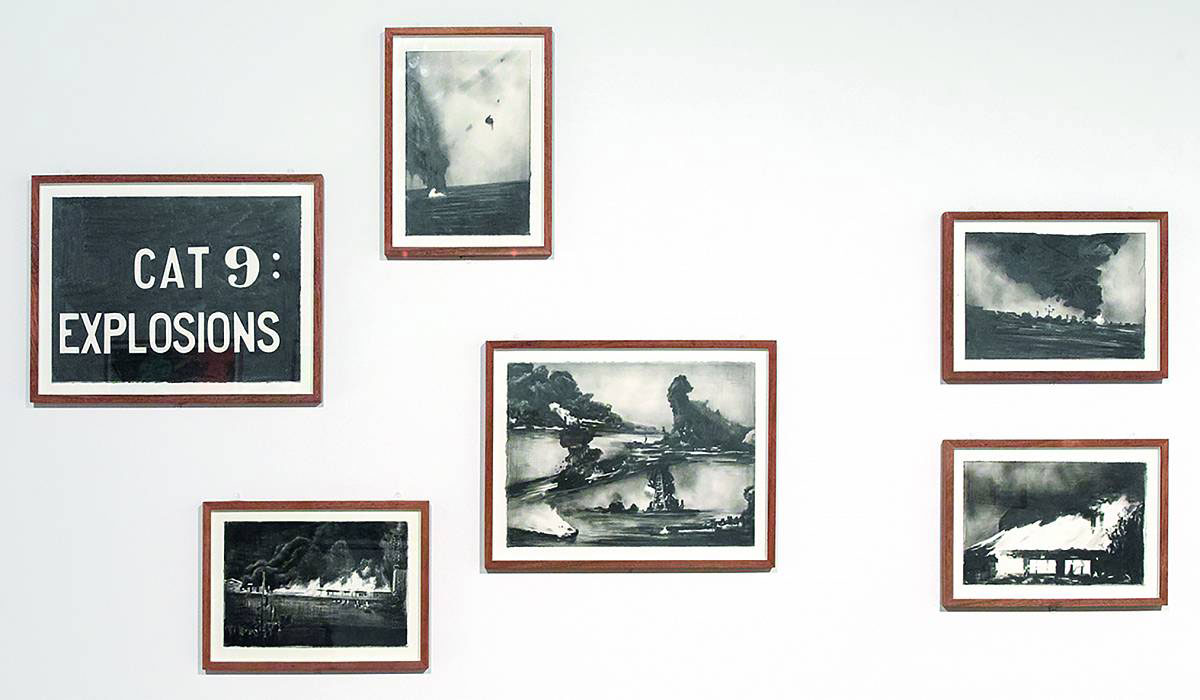ART-PREVIEW:A Passion for Drawing
 Ever since the 1990s, Florence and Daniel Guerlain’s interest has been focused on contemporary drawing, and the two have by now accumulated an extensive collection of works by internationally known artists. They are also the initiators and sponsors of the Prix de dessin, which is conferred annually by a jury.
Ever since the 1990s, Florence and Daniel Guerlain’s interest has been focused on contemporary drawing, and the two have by now accumulated an extensive collection of works by internationally known artists. They are also the initiators and sponsors of the Prix de dessin, which is conferred annually by a jury.
By Dimitris Lempesis
Photo: Albertina Museum Archive
Florence and Daniel Guerlain’s have by now accumulated an extensive collection of works by internationally known artists. 2013 saw this couple donate part of their collection (totaling 1,200 drawings, and 200 artists) to the Centre Pompidou in Paris. And now, as the first Central European museum to do so, the Albertina Museum with the exhibition “A Passion for Drawing-The Guerlain Collection from the Centre Pompidou”, is providing a glimpse into the Guerlains’ activities as collectors by showing a selection of highlights from these holdings. Mark Dion’s work examines the ways in which dominant ideologies and public institutions shape our understanding of history, knowledge, and the natural world. The job of the artist, he says, is to go against the grain of dominant culture, to challenge perception and convention. Appropriating archaeological, field ecology and other scientific methods of collecting, ordering, and exhibiting objects, Dion creates works that question the distinctions between ‘objective’ (‘rational’) scientific methods and ‘subjective’ (‘irrational’) influences. Marcel Dzama’s small ink and watercolor drawings of hybrid characters, like humans with antlers or trees with hands, resemble story illustrations. Interspersed with a range of references including Surrealist film, Dadaism and Soviet-era agitprop, his work more often recalls folk and craft storytelling traditions, showing that simple narrative can be an intricate, compelling contemporary art-making strategy. Dzama also works in sculpture and video and has experimented with puppetry and costumes. Working within a set of self-imposed parameters, Marcel van Eeden has created drawings that question the way history is codified and recorded. According to his many rules, van Eeden must make a new drawing every day, and all the drawings must be based on found images and text originating on a specific date before he was born. To achieve the graphic novel quality of his illustrations, van Eeden uses pencil or ink on paper, each work a part of a non-linear narrative in which fictional characters randomly reappear in a way that evokes the unreliability of memory. Since 2004, Catharina van Eetvelde has been developing an exceptional and pathbreaking stance on drawing. For the artist drawing has always constituted the foundation of her work, but she does not understand drawing as an activity bound exclusively by the medium of paper. Rather, drawing is the way in which she relates to the world, and in particular to the natural sciences. Using an approach that is downright anthropological, the artist analyses and investigates how the natural sciences shape our lives and our conceptions. Jana Gunstheimer draws on the world as a reservoir of undiscovered possibilities, ferreting out what is concealed and mysterious. Reality turns out, in her art, to be a conglomerate of labyrinthine spaces and fantastic stories. Fact and fiction can no longer be clearly separated. Gunstheimer’s works always operate with possible truths, deftly taking up past or contemporary events and spinning them out, with striking logical consistency, into the realm of invention. In so doing, they employ the means of irony and black humor in such subtle doses that the artist’s confabulations, rather than appearing to the naked eye, operate in this play of absurdities as brilliant moments of artistic irritation and amusement. In his work Erik van Lieshout addresses a multitude of contemporary socio-political issues such as multiculturalism, right-wingers, the position of minorities and outsiders as well as the modern consumer society. Van Lieshout looks at these issues from a radically personal point of view, putting himself into the actual environment at hand. By typically not adapting to the general behavior of his surrounding he becomes an active player in the action which causes many humoristic situations but also provokes strong reactions of others. Robert Longo is an American artist best known for his detailed photorealistic drawings of jumping figures, sharks, tigers, and guns. Drawn in charcoal, graphite, and ink, his monochrome series “Men in the City” renders businessmen and women in a state of suspended animation, and brought the artist critical acclaim in the early 1980s. David Nash is a British sculptor and Land artist working primarily with natural materials and live trees. His wooden sculptures are made using heavy equipment including chainsaws and blowtorches, morphing trees into unexpected shapes, Nedko Solakov is considered as an important protagonist of contemporary European art.An alert observer of contemporary life, Solakov’s drawings, paintings, and installations call not only the art system into question, but also collective “truths” and the contradictions of human existence. Drawing and Thinking (often in form of narration or storytelling) are the two essential, inseparable poles of Solakov’s art. Solakov is skilled not only in drawing, but also in other techniques, such as painting, video, installation and performance. Yet it seems that his drawing abilities form a base for his entire multi-media practice. Solakov is primarily a storyteller. Rather than adhering to classical compositional rules, his works are framed according to story lines. These non-linear narratives are often dispersed, multi-directional, or interwoven in networks. As they unfold, they form a territory that is both visual and discursive, both physical and fictional. The addition of explanatory text and commentary often accompanies each drawing. The boundary between drawing and writing is thus blurred, and the written texts become drawings themselves. Renie Spoelstra uses film footage as a starting point for her charcoal drawings. The suede like and velvety texture is achieved by the many layers of charcoal, which are skilfully positioned on top of each other to re-create an almost cinematographic scene. The balance between darkness and soft beams of light is rendered through the many shades of black and grey, creating a notion that something may be lurking below the surface. Spoelstra’s deft, artistic sensitivity has created moods through landscape throughout her career. Aya Takano is a contemporary Japanese artist best known for her involvement with the aesthetics of the Superflat movement and manga art. Takano’s work is recognized for its use of sexually empowering images of women, animals, and often surreal mythology, creating a loose narrative of her artistic persona. Her work is part of a Postmodern tradition in Japan that appropriates popular art forms, using them to represent critical perspectives on Japanese contemporary life. Sandra Vasquez de la Horra’s wax-dipped pencil drawings are at once personal and universal. Her work explores such vast themes as Chile’s history (her native country), religion, sex, myths, social realities, folk culture and death; some of which are recurring throughout her practice. The viewer is drawn into her universe of fantastic creatures haunted by carnal and psychological concerns. The artist’s imagery reflects the serious, the comic and the ordinary of the common man’s everyday existence depicted in a visual language that is high-spirited, coated with black humor and rooted in popular culture. As in Parra’s use of banal language and humorous turns of phrase to depict often tragic or pathetic situations, Vasquez de la Horra’s work embodies the same irony and humanism. In some of her works, the titles are written in large letters within the drawing itself, becoming an integral part of the imagery, in Spanish, English or German. The way in which the artist combines text and image comes close to the aesthetics of visual poetry.
Artists: Mark Dion, Marcel Dzama, Marcel van Eeden, Catharina van Eetvelde, Jana Gunstheimer, Erik van Lieshout, Robert Longo, David Nash, Cornelia Parker, Joyce Pensato, Chloe Piene, Pavel Pepperstein, Javier Pérez, Anne-Marie Schneider, Kiki Smith, Nedko Solakov, Renie Spoelstra, Aya Takano, Sandra Vásquez de la Horra, Jorinde Voigt
Info: The Albertina Museum, Albertinaplatz 1, Vienna, Duration 11/10/19-11/1/20, Days & Hours: Mon-Tue, Thu & Sat-Sun 10:00-18:00, Wed & Fri 10:00-21:00, www.albertina.at










